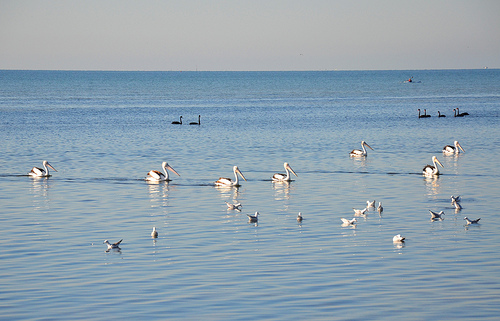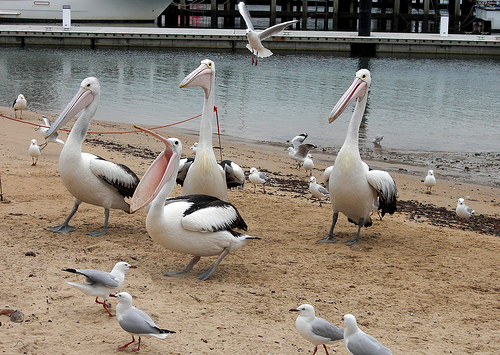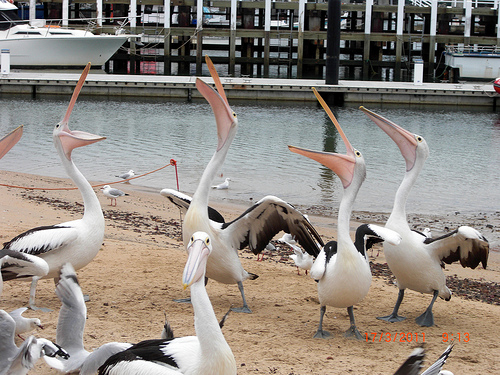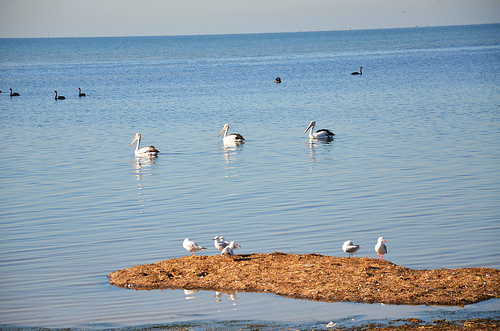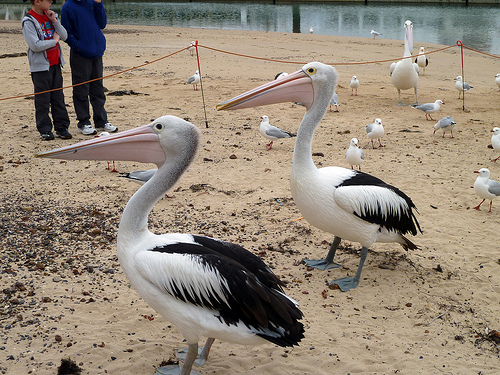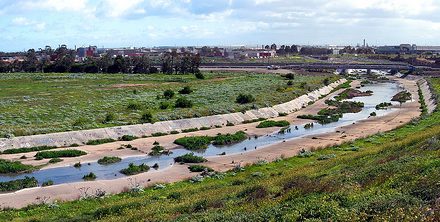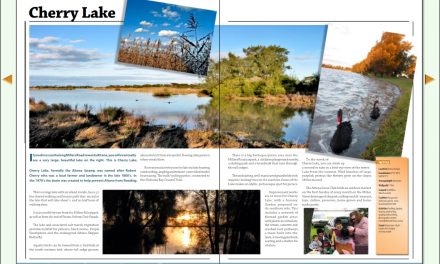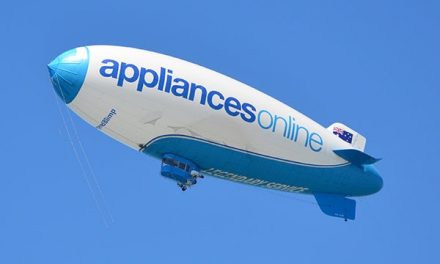The choice of the Pelican as the logo of Hobsons Bay probably reflects the abundance of this interesting bird in the municipality, with as many as 50-60 pelicans found in Altona – a population size hardly replicated elsewhere in Melbourne (Ref 1). Pelicans have been reported breeding at 11 sites across Victoria, with Mud Islands in Port Phillip Bay and French Island in Western Port Bay being the closest to Melbourne. The pelicans in Altona probably come from the breeding grounds in Mud Islands.
Apart from the municipality’s logo, the word “Pelican” also appears in several local newsletters, businesses and communities.
- Pelican Post – newsletter of Hobsons Bay City Council
- Pelican Brief – newsletter of Altona Meadows Community Centre
- Pelicans Landing – restaurant at Gem Pier, Williamstown
- Pelican Bistro – at Altona Bowling Club, 113 Civic Parade, with menu and a favourable review
- Pelican Peddlers – a Tuesday group of bike riders that often meet at the Altona Pier.
- People, Piers & Pelicans Coastal Trail map – tourism map created by Hobsons Bay City Council
There is a pelican named Altona at the Melbourne Zoo. She was found with a serious wing injury in Altona and brought to Melbourne Zoo for treatment in February 2002. She remained at the Zoo as she would not be able to fly again and fend for herself in the wild. Together with another treated pelican, Altona is staying in the estuary area of the “Wild Sea” development. Other injured pelicans may not be that fortunate. According to a news article published in 2008 in the Star Community newspaper, at least two pelicans and several ibis were killed each week after straying into high-voltage powerlines, littering an “informal pelican graveyard” besides Kororoit Creek near Grieve Parade, Altona.
There are 8 pelican species, the smallest being the Brown Pelican and the largest is believed to be the Dalmatian Pelican. The Australian Pelican (Pelecanus conspicillatus), found along the Australian coastline, has the longest (40-50 cm) bill. These are large birds weighing 4.0-6.8 kg, measuring 1.6-1.8 m in length, 2.3-2.5 m in wingspan and may live between 10-25+ years. They have black and white bodies, enormous pouched bills, blue legs and yellow eye-rings. The pouch turns from pink to bright red, blue and orange during courtship. A pelican’s bones are very light but not hollow like most other birds. They are filled with a material like the foam found inside a surfboard.
Pelicans eat mainly fish but they are opportunistic feeders and will eat crustaceans (like prawns and crabs), squids, tadpoles and even turtles. They readily accept “handouts” from humans, and a number of unusual items have been recorded in their diet. During periods of starvation, pelicans have been reported capturing and eating seagulls and ducklings. The gulls are held under water and drowned before being eaten headfirst. Pelicans will also rob other birds of their prey.
Both the bill and pouch play an important role in feeding. The sensitive bill helps locate fish in murky water and has a hook for gripping slippery food items. The pelican uses its pouch as a net to scoop small fish and shrimps and to collect water (including rainwater). An Australian Pelican can hold up to 13 litres or 3.4 gallons of water in its pouch. Once the pouch is full, the pelican drains the water and consumes the preys that remain.
Australian Pelicans often feed as a cooperative group known as pods, scoops or squadrons. Sometimes these groups are quite large. One group numbered over 1,900 birds. A pod of pelicans works together, herding schools of fish into shallow areas where they are easily scooped up.
Pelicans are not capable of sustained flapping flight but can remain in the air for 24 hours, covering hundreds of kilometres. They are excellent soarers and can use thermal updrafts to rise to considerable altitudes. Flight at 1,000 m is common and heights of 3,000 m have been recorded. The birds spread out from their colonies with slow and heavy wing beats, searching out suitable updrafts. When one is found, the lead birds begin to circle, flapping their wings intermittently, rising steadily up the sky. Within minutes a “staircase” is formed, with 10, 20, perhaps 100 pelicans spiralling steadily upwards. When they reach a suitable height, perhaps thousands of feet, they peel off and glide towards their destination. By moving from one thermal to the next, pelicans can travel long distances with minimum effort, reaching air speeds of up to 56 km/hour.

